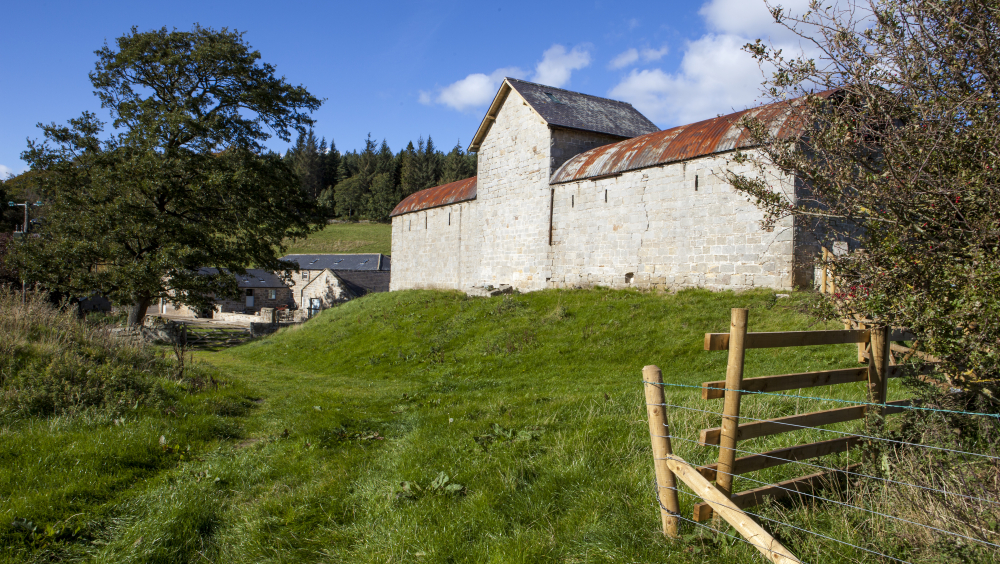Ancestors unlocked by historical graffiti
Our Heritage Open Days have been a marvellous way to unearth history about Cragend Farm, (remodelled by Lord Armstrong of Cragside, in Northumberland, to show off his prize cattle). In September 2019 visitors to the Open Day came in search of clarity, gained confirmation of their families links to this historic farm, never before discovered. It places their relative as part of the fabric of Cragend Farm.
Heritage Open Day at Cragend Farm 2019 It was with huge pleasure that we hosted a Heritage Open Day at Cragend Farm in September 2019, as we had new repair and restoration work to reveal in our Grade II* listed building The Cragend Silo, as well as a ‘walk & talk tour’ about how the farm and its machinery are linked to Cragside, a National Trust property in Northumberland. The tour was well attended and we were thrilled that one couple had even decided to stay the night in our Bed & Breakfast room ‘The Armstrong Wing’ as well as take the tour of the farm. Our tour consists of a historical journey, from the Bronze Age when early settlers built a small fortress on the hill at the back of the farm, to the current day, with spotlights on Harry Hotspur the Earl of Northumberland and the War of the Roses, when he was gifted lands for services to the crown which included Cragend, and Victorian lawyer turned engineer, Lord William Armstrong who built the Cragside estate from land he had purchased from the (4th,5th & 6th ) Duke of Northumberland in the 1860’s and design and manufactured hydraulic machinery to power his electric and hydraulic technology for the house, and also his model farm ‘Cragend’. Cragend Farm was specifically remodelled to house his prize cattle and demonstrate how working with machinery could help the agricultural workers. In 1900 when Lord Armstrong died the estate handed over the farm to tenants, and finally in 2010 the farm was sold by the Armstrong family to Mr & Mrs Renwick. Thus began years of restoration to return the buildings to their former glory, with the workers cottages being renovated, the barns being converted in to a large family home and the Grade II* listed Silo being repaired in order to make it safer to visit and explore today. It was during open discussion at the end of the tour that the guests who were staying the night commented that the reason they had asked to stay was that a member of their family was known to have stayed at Cragend Farm in the early 20th century. We were told that their name was “Blenkinsopp” a good Peak District name, but an unusual Northumberland name. At this point we were unsure how we were going to prove that this family may have stayed at Cragend, until we looked at the Cragend Graffiti Report that was done by archaeologists in 2012 as part of a wider project to record the historic detail of the farm * (https://www.academia.edu/6936461/Recording_Farmworkers_Graffiti_at_Cragend_Farm_Rothbury ). The graffiti, some 500 inscriptions, ranges from 1890’s to the present day, and many are from the First and Second World War. Luckily for us the graffiti is catalogued on an Excel sheet which made it relatively simple for us to search for the name Blenkinsopp. And there it was! 1903! Wow! * Building H h1a 7 pencil on timber - handwriting name weather date 1903 John Ble/Robert Dunn (underlined)/Andrew Gunvey (underlined)/John Bell (underlined)/John Blenkinsopp (underlined)/Sept 2nd 1903/a very wet day It was very exciting for us to reveal this information to our guests, and we discussed further why the family may have stayed here. During the course of the following weeks we corresponded by email trying to piece together the story. This portion of the granary had to be removed as it was damaged and full of wood rot but we had photographs of the inscriptions and their locations. It appears that Mr J Blenkinsopp and his family of wife with five children travelled from the Peak District (Chatsworth/Bakewell) to Cragside as a cattle handler. As we know, Lord Armstrong had built the farm to house his prize cattle and so it came as no surprise that a worker from another county may have been here looking for the job or that perhaps the worker had heard that a cattle handler was required in this prestigious Northumberland Estate. It is possible that Mr Blenkinsopp was here at the farm to work with the cattle and either drive them elsewhere or sell them on behalf of the new Lord Armstrong who did not have an interest in the cattle. Since this discovery we have also been checking the census in 1891, 1901 and 1911 to locate this family, some of whom seemed to stay locally for a while. It has been so exciting to find a living relative of the graffiti writers, especially one who was not from our local area and it has been thanks to the Heritage Open Day that this has come to light. Our thanks to Mrs Claire Halksworth (HOD visitor and great grand-daughter of Mr Blenkinsopp). Inscriptions have been found mainly on the top floor of Cragend Grange, particularly in ‘The West Room’. In 2019 we found another poem on the side of The Silo stairs going up to the first floor, also.
The graffiti found at Cragend Farm dates from the late 1800's, and there are highlights during the First and Second World Wars when POW's stayed at the farm to work. There are a number of inscriptions written in foreign languages. The largest inscription is of how to work the milking machines, in a number of languages so that all the farmworkers who stayed at Cragend Farm could understand. It give s a great insight into who was living at Cragend Farm and also how they spent their time during the war years, for example, harvesting potatoes, lambing, and writing poems.
